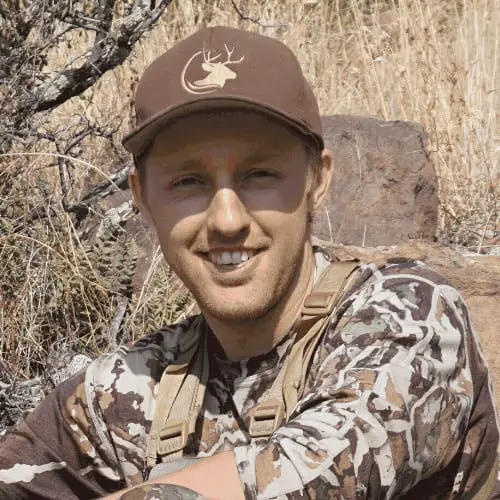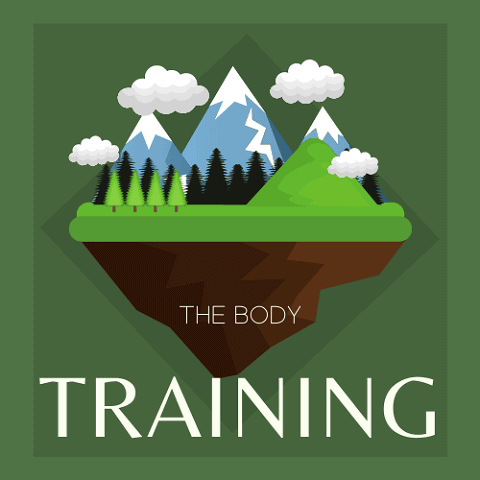Fact checked by Steven Lines, lifelong Hunter and Outdoorsman .
.
The temperature is one of the most important elements to consider when deer hunting. It can affect everything from the way your scent is distributed to how active the deer are. But what’s the ideal temperature for deer hunting?
Deer tend to prefer colder weather. Any time that the temperature drops below the average, activity tends to pick up. The bigger the drop, the more active they will become. Sometimes, a significant temperature rise can signal a front approaching. This can also be a good time to hunt.
If you want to have a successful hunt, it’s important to know the environmental conditions. Here are some of the things to know about the link between temperature and deer activity.

In this post, we'll cover:
What Temperatures Will Produce the Most Deer Activity?
The temperature can have a significant impact on the way how active the deer are. As a general rule, deer prefer to move around on colder days.
The main reason for this is the thickness of their fur. On hot days, moving for long distances can make them uncomfortably warm. Because of this, they tend to limit their movements. So, when the temperature drops, they will be better suited to physical activity.
What Conditions Make for Good Hunting?
The best way for hunters to know when deer will be most active is by keeping an eye on the weather conditions. More specifically, you’ll want to look at a weekly forecast. Deer will be most active on the days when the temperature is expected to drop.
For example, imagine that you have a week where the temperature was 90 degrees. On Tuesday, a cold front is going to move in and drop temperatures to 80 degrees. This can represent the ideal time to go hunting, as the deer will be more active on that day.
How significant the drop in temperature will determine the impact on buck behavior. You’ll see the best results when the temperature drops by more than 10 degrees, compared to the average temperatures.
It’s important to keep an eye on any weather systems that are moving in the area. The deer will know when a front is approaching. During this time, you might spot a rise in their activity. Often, you’ll see another boost in activity when the front has moved away. This can be a good way of deciding when you are going to hunt.
Looking at the forecasts will make it easy for you to spot a front moving in. The biggest indicator of a front is a sudden rise in temperatures—the more dramatic the rise, the bigger the front. Generally, though, anything over 10 degrees will be significant enough to boost movement.
Where are the Best Locations to Hunt During Colder Weather?
Know that we know why deer tend to be more active in colder weather; we can look at how you can use this to your advantage. To do this, you need to know where the deer will be moving to.
There are a few locations that you should check out. First, it’s a good idea to look at the transition zones. These are the traffic channels that they will use to get around—looking for tracks or feces which can indicate where the deer are.
The next area that you might want to look for is food sources. This can be especially lucrative before a front rolls in. It can also be good to look at these areas after a heavy frost or a storm.
Colder weather can also be a good time to check the rub lines. These are markings that the deer make on trees to denote their territory. These can be a good way to find the deer and identify where the pack is moving to.
Another way to see where the deer are moving is by looking for scrapes. These are another way that bucks will mark their territory and can indicate activity. While these can be useful tools, they will be harder to spot than rub lines.
How Does Frost Impact Deer Movement?
While cold temperatures might be preferred, you should be wary of frosting. A thick frost can hamper movement. Because the ground is frozen, they won’t have as much to eat. This can be a major problem.
These conditions only occur at low temperatures. You’ll need to wait until it’s under 27 degrees before a thick frost will form.
The good news is that these events don’t last long. Often, a thick frost will only last for a few days. After this period, it’s a good opportunity to get hunting. Generally, the deer will be more active during these times.
You’ll want to put yourself close to a food source. Food plots and soured corn attractants can be a good option during this time, as the deer will want to spend more time grazing.
During extremely low temperatures, deer activity tends to pick up later during the day. This gives the sun some time to warm them up.
Where Should You Hunt at High Temperatures?
As we’ve mentioned, most deer will be more active during the colder weather. But this doesn’t mean that it will be impossible for you to hunt during these conditions. You might just need to refine your tactics a little.
First, you’ll still need to pay attention to the weather forecast. During warm weather, a shower can be a good way of cooling the deer down. This will boost activity. Also, remember to pay attention to sudden spikes or drops in temperature.
Next, you’ll need to make sure that you’re hunting the right locations. It’s a good idea to consider the local terrain. Try to find shaded areas. These will be a good place for deer to stay cool as the temperatures rise.
The next thing that you want to look for is food. Even though it’s hot, deer will still need to eat. Open fields, baited areas, and fruit trees can all be good spots to check for deer activity.
Another good area to check out is the water hole. There are a few reasons why deer like to frequent this area. First, the heat causes them to sweat more frequently. As a result, they will need to increase the amount of water they are drinking. Furthermore, areas that are close to a water source tend to be cooler.
Finally, you’ll need to consider when you will be starting your hunt. The hot temperatures can cause deer to delay moving until later in the day. Sometimes, they can even move during the night. If you have the gear, this can be a lucrative time to bow hunt a few deer.
Remember, warmer temperatures can slow down movement and limit activity. So, once you’ve got a good site, be prepared to stay there for a few days. Though the deer might not arrive on the first day, you will eventually be rewarded with a good shot if you are patient.
if you are patient.
Final Thoughts
Temperature is one of the best indicators to look for when you are hunting. Usually, they will respond best to colder temperatures. The thick coat means that high temperatures can make them uncomfortable. Furthermore, deer can sense changes in barometric pressure, which are associated with oncoming fronts. Because of this, it’s a good idea to look at fluctuations in the temperature. Large drops or rises will tend to boost activity. Over time, you will learn what weather conditions produce the best hunting days for your area.

Steven Lines is a hunter and outdoorsman from Safford, Arizona, USA. Since he was a child, he has been hunting and fishing and has over 20 years of outdoor experience. Steven works as a hunting guide in Arizona during his spare time and runs a Youtube channel dedicated to sharing his outdoor adventures with others.
dedicated to sharing his outdoor adventures with others.
Sources
- Seven Things to Know About Temperature and Deer Activity

- How Does Temperature Affect Deer Movement

- How Weather Affects Deer Hunting


